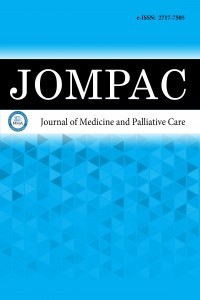1.
Torres MJ, Barrionuevo E, Kowalski M, Blanca M.Hypersensitivity reactions to nonsteroidal anti-inflammatorydrugs. Immunol Allergy Clin North Am. 2014;34(3):507-524.
2.
Kowalski ML, Asero R, Bavbek S, et al. Classification and practicalapproach to the diagnosis and management of hypersensitivity tononsteroidal anti-inflammatory drugs. Allergy. 2013;68(10):1219-1232.
3.
Kowalski ML, Makowska JS, Blanca M, et al. Hypersensitivity tononsteroidal anti-inflammatory drugs (NSAIDs) - classification,diagnosis and management: review of the EAACI/ENDA(#) andGA2LEN/HANNA. Allergy. 2011;66(7):818-829.
4.
Nizankowska-Mogilnicka E, Bochenek G, Mastalerz L, et al.EAACI/GA2LEN guideline: aspirin provocation tests for diagnosisof aspirin hypersensitivity. Allergy. 2007;62(10):1111-1118.
5.
Szczeklik A, Stevenson DD. Aspirin-induced asthma: advancesin pathogenesis, diagnosis, and management. J Allergy ClinImmunol. 2003;111(5):913-921.
6.
Szczeklik A, Sanak M. The broken balance in aspirinhypersensitivity. Eur J Pharmacol. 2006;533(1-3):145-155.
7.
Kowalski ML, Makowska J. Use of nonsteroidal anti-inflammatorydrugs in patients with aspirin hypersensitivity : safety of cyclo-oxygenase-2 inhibitors. Treat Respir Med. 2006;5(6):399-406.
8.
Ring J, Messmer K. Incidence and severity of anaphylactoid reactionsto colloid volume substitutes. Lancet. 1977;309(8009):466-469.
9.
Cakmak ME. Which non-steroidal anti-inflammatory drug(NSAID) is safer in patients with Non-steroids ExacerbatedRespiratory Disease (N-ERD)? A single-center retrospectivestudy. Tuberk Toraks. 2022;70(4):365-374.
10.
Celik GE, Erkekol FO, Aydin O, Demirel YS, Misirligil Z. Aredrug provocation tests still necessary to test the safety of COX-2inhibitors in patients with cross-reactive NSAID hypersensitivity?Allergol Immunopathol. 2013;41(3):181-188.
11.
Terzioglu K, Sancar O, Ekerbicer HC, Ozturk RT, Epozturk K.Tolerability to paracetamol and preferential COX-2 inhibitorsin patients with cross-reactive nonsteroidal anti-inflammatorydrugs hypersensitivity. Asia Pac Allergy. 2020;10(3):e29.
12.
Gültuna S, Gümüşburun R, Bavbek S. Cross-reactivity betweenCOX-2 inhibitors in patients with cross-reactive hypersensitivityto NSAIDs. J Public Health Int. 2022;5(2):61-72.
13.
Bavbek S, Dursun AB, Dursun E, Eryilmaz A, Misirligil Z. Safetyof meloxicam in aspirin-hypersensitive patients with asthmaand/or nasal polyps: a challenge-proven study. Int Arch AllergyImmunol. 2007;142(1):64-69.
14.
Prieto A, De Barrio M, Martin E, et al. Tolerability to nabumetoneand meloxicam in patients with nonsteroidal anti-inflammatorydrug intolerance. J Allergy Clin Immunol. 2007;119(4):960-964.
15.
Rojas-Mejia DV, Silva Espinosa DL, Martinez DM, RamirezZuluaga LF, Serrano Reyes CD. Meloxicam and/or etoricoxib couldbe administered safely in two equal doses during an open oralchallenge in patients with nonsteroidal anti-inflammatory drughypersensitivity. Int Arch Allergy Immunol. 2021;182(5):433-439.
16.
Inomata N, Osuna H, Yamaguchi J, et al. Safety of selectivecyclooxygenase-2 inhibitors and a basic non-steroidal anti-inflammatory drug (NSAID) in Japanese patients with NSAID-induced urticaria and/or angioedema: comparison of meloxicam,etodolac and tiaramide. J Dermatol. 2007;34(3):172-177.
17.
Quinones Estevez MD. Are selective COX-2 inhibitors a safe optionin patients with intolerance to nonsteroidal antiinflammatorydrugs? J Investig Allergol Clin Immunol. 2009;19(4):328-330.
18.
Kowalski ML, Agache I, Bavbek S, et al. Diagnosis andmanagement of NSAID-Exacerbated Respiratory Disease(N-ERD)-a EAACI position paper. Allergy. 2019;74(1):28-39.
19.
Pastorello EA, Zara C, Riario-Sforza GG, Pravettoni V, IncorvaiaC. Atopy and intolerance of antimicrobial drugs increase the risk ofreactions to acetaminophen and nimesulide in patients allergic tononsteroidal anti-inflammatory drugs. Allergy. 1998;53(9):880-884.
20.
Tepetam FM, Çolakoğlu B, Ozer F, Maden E, Yosunkaya S,Duman D. Tolerabillity of nimesulide in patients with historiesof adverse reactions to acetylsalicylic acid and nonsteroidal anti-inflammatory drugs. Nobel Medicus. 2014;10(3):81-87.
21.
Asero R. Risk factors for acetaminophen and nimesulideintolerance in patients with NSAID-induced skin disorders. AnnAllergy Asthma Immunol. 1999;82(6):554-558.

